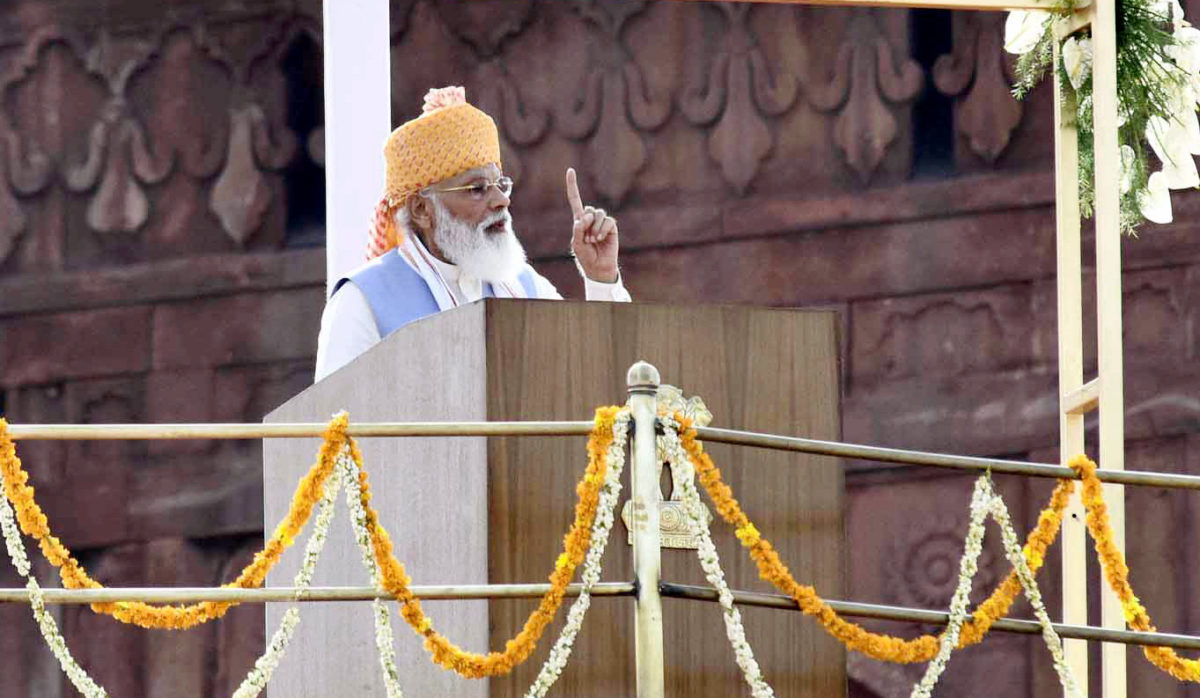In his address to the nation on 75th Independence Day, India’s prime minister Narendra Modi announced the setting up of the National Hydrogen Mission.
The prime minister said green hydrogen would play a crucial role in helping the nation take a quantum leap in terms of climate change mitigation.
Asserting that green hydrogen is the future of the world, the prime minister called upon the [industry and other stakeholders] to make India a global hub for green hydrogen production and export. “This will not only help India to make new progress in the field of energy self-reliance but will also become a new inspiration for clean energy transition all over the world. New opportunities from green growth to the green job are opening up today for our start-ups and youth,” he said.
Production and application of low-carbon, economically competitive green hydrogen (produced from renewable electricity) would play a significant role in India’s energy transition as it strives to reduce carbon emissions. Hydrogen is already being explored in transport as fuel for longer-range vehicles and heavier-duty trucks, in the industry as a chemical feedstock, and in the power sector for longer-term energy storage.
Manoj K Upadhyay, founder and chairman, ACME Group (a front runner in setting up of green hydrogen and ammonic plant in Rajasthan), hailed the hydrogen mission announcement, describing it as “an essential and visionary step at the backdrop of a recent report on Climatic conditions because of human-influenced pollution and emissions.”
“As per estimates and net-zero targets being taken by various countries for 2030 and 2050, the Green hydrogen ecosystem will be a 12-13 trillion dollar industry by 2050. It can be an excellent opportunity for India to become a significant exporter of green hydrogen, helping the world reduce carbon emissions and creating local jobs and wealth,” he said.
“Mass deployment of renewable energy in India helped us to produce electricity cheaper than any other sources of energy. Similarly, the deployment of green hydrogen at the lowest cost will help us in a cost leadership position not only to meet our green hydrogen and ammonia demand internally but also to become a major exporter of Green Hydrogen and Green ammonia worldwide. This initiative on green hydrogen can help us to build an ecosystem of a 2-3 trillion dollar industry in the next 20-25 years.”
Current state
According to a TERI report, as of 2020, hydrogen demand in India was close to 6 million tonnes annually, with most of the demand coming from ammonia production and refineries.
Most hydrogen in the nation is produced using natural gas through steam methane (CH4) reforming and used in the refinery and fertilizer industries. The hydrogen so produced is termed ‘grey’ as the carbon byproduct leads to CO2 generation.
Green hydrogen is zero-carbon hydrogen production through the electrolysis of water (splitting of water into hydrogen and oxygen) using renewable electricity. However, the costs of hydrogen from electrolysis (using grid or renewable) today are relatively very high compared to hydrogen from natural gas reformation. The cost can be expected to fall significantly in the coming years as the cost of electricity and electrolyzers falls.
Projects
With the government push, India has seen a good number of projects announced both from public and private sectors, including JSW Energy partnering with Australia-based Fortescue Future Industries on green hydrogen for steel making and hydrogen mobility, IndianOil’s plans to build India’s first green hydrogen plant at its Mathura refinery, and BGR Energy’s partnership with Ireland’s Fusion Fuel Green on a demonstrator plant for cost-competitive green hydrogen. Industry majors have also formed an India Hydrogen Alliance led by Reliance Industries.
ACME Group has recently commissioned the world’s first integrated commercial-scale pilot plant for Green hydrogen production in Rajasthan. The plant will help in saving approx. 4400 tonnes/annum of CO2 emissions.
Green hydrogen at the ACME plant will be produced using 5 MWp from a solar plant scalable to 10 MW, which is an integral part of the project. The green ammonia plant, once commissioned, will produce 5 tons per day of green ammonia with an annual output of 1,750-1,800 tons of green fuel.
“This R&D pilot has given us knowledge, experience, and learnings which we shall utilize in our large-scale green hydrogen and ammonia plants under development,” said Upadhyay.
This content is protected by copyright and may not be reused. If you want to cooperate with us and would like to reuse some of our content, please contact: editors@pv-magazine.com.









By submitting this form you agree to pv magazine using your data for the purposes of publishing your comment.
Your personal data will only be disclosed or otherwise transmitted to third parties for the purposes of spam filtering or if this is necessary for technical maintenance of the website. Any other transfer to third parties will not take place unless this is justified on the basis of applicable data protection regulations or if pv magazine is legally obliged to do so.
You may revoke this consent at any time with effect for the future, in which case your personal data will be deleted immediately. Otherwise, your data will be deleted if pv magazine has processed your request or the purpose of data storage is fulfilled.
Further information on data privacy can be found in our Data Protection Policy.